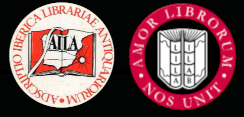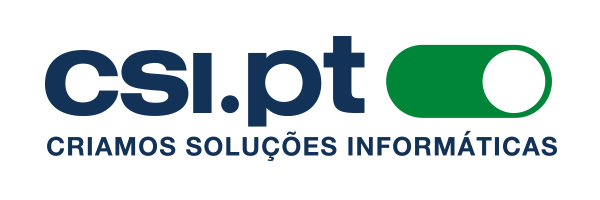


Home |
Temáticas |
Catálogos |
Pedidos |
  |  |
|||||||
|

|
RUGENDAS. (Johann Moritz) HABITANTE DE GOYAS, QUADRO A ÓLEO PINTADO SOBRE MADEIRA. |
|
|
Clique nas imagens para aumentar. PINHEIRO. (Padre Francisco) DE CENSV ET EMPHYTEVSI TRACTATUSIn Duas Partes Distributus. AUTHORE P. Francisco Pinheiro, Lusitano, Govveensi, Societatis Jesu, Doctore Theologo, In Eborensi Academia Olim Primario Sacrae Theologiae professore, atque ejusdem Academiae Cancellario. EBORAE Cum Superiorum permissu. Ex Typographia Academiae Anno Domini. M. DCC. LXXXI. [1681] In fólio de 28,8x20,7 cm. Com [xvi], 618, [xlviii] págs. Encadernação da época inteira de pele com nervos e ferros a ouro. Exemplar com desgastes na encadernação, em especial à cabeça da lombada, com um pequeno furo de traça, nas pastas, com faltas superficiais de pele e nos cantos. Nota com o que custou este livro em 1724 e assinatura de posse de Inácio Monteiro de Faria; uma segunda assinatura de posse e um rubrica todas na frente da folha de guarda. Rubrica coeva no pé da folha de rosto; alguns sublinhados no texto e chamadas marginais em tinta coeva; pequena mancha à cabeça das primeiras folhas até página 150; mancha no canto inferior das primeiras páginas. Impressão com caracteres redondos e alguns itálicos no prólogo e no início de cada uma das partes. Texto ornamentado com cabeções com motivos vegetalistas e animalistas enquadrando o trigrama sagrado característico da Companhia de Jesus, com iniciais decoradas e com um belo florão de remate, cesto com flores, no fim do índice de assuntos. As folhas preliminares contêm: extensa dedicatória do autor a Manuel de Faria Severim, Prólogo do autor, Licenças de 22 de Junho a 2 de Julho de 1651 (da primeira edição) com aprovações de Francisco Távora, Provincial da Companhia de Jesus; Frei António Veloso e Frei Valério de São Raimundo e de 22 de Julho de 1678 a 24 de Setembro de 1682, com aprovação desta 2.ª edição por Gaspar de Lemos Galvão. Incluem também o índice dos títulos das partes da obra e das disputas em que estão divididas. As folhas finais contêm o índice de assuntos e duas páginas em branco. A 1.ª edição foi publicada em Coimbra, pelo impressor Manuel Dias, em 1655. Esta 2.ª Edição é bastante rara, pois não consta dos principais catálogos de leilões e de livreiros. Existe uma variante em que os cabeções e iniciais são todos diferentes incluindo o florão de remate no final do índice. Obra muito importante para o estudo da história do direito, em especial porque os contratos enfitêuticos mantiveram-se em uso, em Portugal até cerca da segunda metade do século XX e no Brasil até 2003. Importante também para o estudo do instituto dos morgadios em Portugal. O autor trata com grande pormenor de dois tipos de contratos: 1.º - O Censo, que podia ter pelo menos duas formas - censo consignativo e censo reservativo. No primeiro uma das partes entrega à outra, uma determinada quantia em dinheiro ficando a segunda obrigada a pagar-lhe uma renda. O segundo consiste na cedência do domínio de um bem a uma parte ficando esta na obrigação de pagar uma pensão anual pelos rendimentos do bem cedido. 2.º - A enfiteuse é um instituto jurídico oriundo do Direito Romano e consiste Segundo J. M. de Carvalho Santo a enfiteuse, também dita de emprazamento e de aforamento, designa o contrato pelo qual o proprietário de terreno alodial cede a outrem o direito de percepção de toda utilidade do mesmo terreno, seja temporária ou perpetuamente, com o encargo de lhe pagar uma pensão ou foro anual e a condição de conservar para si o domínio direto. Francisco Pinheiro (Gouveia, 1596 - Coimbra, 1661). Ingressou na Companhia de Jesus, no Colégio de Coimbra, em 14 de Março de 1611. Estudou Filosofia no Colégio das Artes (1613-1617), Teologia no Colégio de Jesus (1619-1923) e doutorou-se em Teologia na Universidade de Évora, em 21 de Julho de 1633. Foi professor de Teologia Especulativa e de Teologia Moral. Regeu Filosofia na Universidade de Évora (1626-1630) onde foi cancelário (1651). Em Coimbra foi Reitor do Colégio das Artes (1654-1657). Foi preso pela Inquisição de Évora por contestar a actuação dos Inquisidores na prisão do almotacé Roque Cortez tendo sido libertado em 1643. Foi professor de Teologia Escolástica durante dezasseis anos, de Teologia Moral durante três anos. Reitor dos Colégios de Coimbra e Évora da Companhia. É autor das seguintes obras: Tractatus de Testamentis, Tomus Primus, Conimbricae; apud Josephum Ferreyra Universitatis Typographus, 1681. (Tomus Secundus, 1684). Teve segunda edição em 1715. Existem diversos manuscritos com os textos que ensinava nas suas aulas e o manuscrito do Tractatus de Testamentis, com data de 1645.
Copy showing signs of wear on the binding, especially at the head of the spine with a small moth hole, on the folders with superficial flaws of leather and at the corners. A note with the cost of this book in 1724 and a handwritten ownership title by Inácio Monteiro de Faria; a second handwritten ownership title and a rubric, all on the front flyleaf. Coeval rubric at the foot of the title page; some underlining in the text and marginal notes in coeval ink; small stain at the head of the first leaves up to page 150; stain at the bottom corner of the first pages. Printing with round characters and some italics in the prologue and at the beginning of each part. Text decorated with headpieces depicting plant and animal motifs framing the sacred trigram characteristic of the Society of Jesus, with decorated initials and with a beautiful finishing fleuron, a basket with flowers, at the end of the subject index. The preliminary leaves contain: the author"s extensive dedication to Manuel de Faria Severim, the author"s Prologue, Licences from 22 June to 2 July 1651 (of the first edition) with approvals from Francisco Távora, Provincial of the Society of Jesus; Friar António Veloso and Friar Valério de São Raimundo and from 22 July 1678 to 24 September 1682, with approval of this 2nd edition by Gaspar de Lemos Galvão. They also include an index of the titles of the parts of the work and the disputes into which they are divided. The final pages contain the subject index and two blank pages. The 1st edition was published in Coimbra by the printer Manuel Dias in 1655. This 2nd Edition is quite rare, as it doesn"t appear in the main auction and bookseller catalogues. There is a variant in which the headpieces and initials are all different, including the finishing fleuron at the end of the table of contents. Very important book for the study of the history of law, especially as emphyteutical contracts remained in use in Portugal until around the second half of the 20th century and in Brazil until 2003. It is also important for studying the institute of morgadios (Majorats) in Portugal. The author deals in great detail with two types of contracts: 1st - The Census, which could take at least two forms - consignative census and reservative census. In the former, one of the parties gives the other a certain amount of money and the latter is obliged to pay rent. The second consists of one party transferring control of an asset to the other, who is obliged to pay an annual pension for the income from the asset. 2nd. - The emphyteusis is a legal institute that originated in Roman Law and consists, according to J. M. de Carvalho Santo, of an emphyteusis, also known as an emprazamento or aforamento, which is the contract by which the owner of allodial land assigns to another the right to perceive all the usefulness of the same land, either temporarily or in perpetuity, with the burden of paying an annual pension or rent and the condition of retaining the direct domain for himself. Francisco Pinheiro (Gouveia, 1596 - Coimbra, 1661). Joined the Society of Jesus at the College of Coimbra on 14 March 1611. He studied philosophy at the College of Arts (1613-1617), theology at the College of Jesus (1619-1923) and obtained his doctorate in theology at the University of Évora on 21 July 1633. He was a professor of Speculative Theology and Moral Theology. He taught philosophy at the University of Évora (1626-1630), where he was cancellor (1651). In Coimbra he was Rector of the College of Arts (1654-1657). He was imprisoned by the Évora Inquisition for contesting the Inquisitors" actions in the imprisonment of the almotacé (municipal officer) Roque Cortez and was released in 1643. He taught scholastic theology for sixteen years and moral theology for three years. Rector of the Society"s Coimbra and Évora Colleges. He is the author of the following works: Tractatus de Testamentis, Tomus Primus, Conimbricae; apud Josephum Ferreyra Universitatis Typographus, 1681 (Tomus Secundus, 1684). It had a second edition in 1715. There are several manuscripts of the texts he taught in his classes and the manuscript of the Tractatus de Testamentis, dated 1645. Referências/References: SBN, IT/ICCU/BVEE/069045 Iberian Books C19196 [119071] USTC, n.º 5060700. Arouca n.º P173. Barbosa Machado II, 223. Referência: 2307PG006
Local: M-6-C-19 Caixa de sugestões A sua opinião é importante para nós. Se encontrou um preço incorrecto, um erro ou um problema técnico nesta página, por favor avise-nos. 
|
Pesquisa Simples




|
||
 |
|||
|